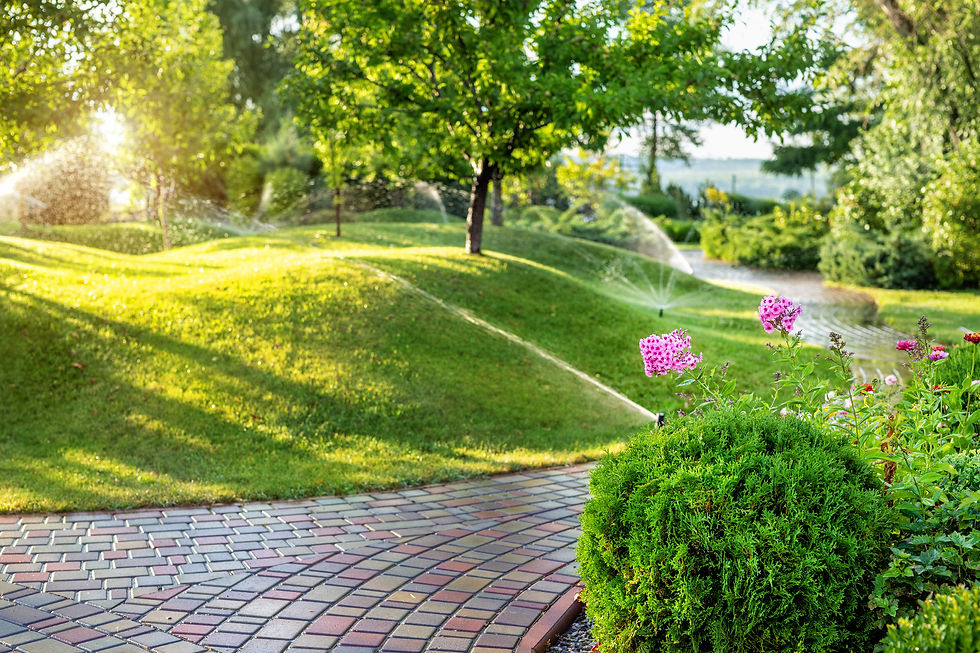5 Common New England Landscaping Problems & Solutions
- Michael Pallone

- Feb 16, 2021
- 3 min read
Understanding the Unique Lawn Care Difficulties of Our Unrelenting Climate
There’s a reason Mark Twain said, “If you don’t like the weather in New England now, just wait a few minutes.” With summer days that can go from highs in the 70’s to triple digits in a matter of a few short hours and winters where a blizzard lurks around the corner of the past week’s bout of t-shirt weather, New Englanders are masters of adaptability.
But while we can simply check a weather app or dress in layers, the harsh and erratic environment within our climate zone can wreak havoc on landscapes. These unpredictable day-to-day conditions create unique difficulties in ensuring the resiliency of the lawns and gardens we dedicate so much care to annually. Don’t let such common obstacles cause you a headache! Wollaston Development’s list of the 5 common problems facing New England landscapes will help you understand their causes and solutions for preventing and fixing them.
Red Thread
One of the most common fungal diseases that afflicts lawns in New England is red thread, characterized by red, circular patches of grass that occur when lawns stay too wet, often in spring or summer after the typical heaps of New England snow have melted. While it won’t necessarily kill your lawn, red thread spreads quickly, and can make it more vulnerable to other diseases along with insects. Solve this lawn ailment by applying a fungicide to the patches, which stops the growth of red thread. For repeated recurrences, consider using an ongoing feeding program of the appropriate amount of nitrogen fertilizer in the fall.
Dollar Spots
Another nasty grass fungus, dollar spots, appear in small, round circles on your lawn, and thrive in dry soils and moist air. Outbreaks of dollar spots increase when grass blades are wet from rain, dew, or irrigation, and roots are dry, and if left untreated, these spots can merge together, forming large areas of brown grass that can be several feet in diameter.
Fungicide will also treat these spots, but prevention is more effective than treatment - dollar spots thrive on unhealthy lawns, so keep your grass healthy and happy to avoid this spot plague. Water deeply, but infrequently, ensuring only intermittent watering when thriving conditions for dollar spots occur.

Erosion
New England’s weather conditions create a world of opportunity for soil erosion to occur, caused by heavy wind, poor drainage, and abundant water. This type of environment disturbs the ground, and spoils vegetation, making soil erosion a common and troublesome landscaping problem, especially in coastal areas.
While solutions for erosion depend highly on the amount of damage that has already occurred, incorporating a dry creek bed in the area helps massively. Simple and effective, these shallow trenches filled with varying sizes of boulders and rocks are recommended by experts to control erosion. If your space doesn’t allow for a dry creek bed, another option is to install pervious or permeable pavers so excess stormwater can run from the surface of your landscape and back into your groundwater stores. A landscaping professional can also offer alternative solutions such as layered plantings, terracing, and more.

Standing Water
When the clouds open up to unleash a hard and unexpected downpour, New Englanders are commonly frustrated with the muddy, boggy mess left behind on their meticulously constructed landscapes. Standing water on the front lawn not only means wading through puddles in your lawn, but it also makes maintaining healthy plantings and turf much more difficult. Most often, the causes for standing water are an unlevel or impermeable lawn.
If you notice stormwater stubbornly collecting on your property rather than running off to a storm drain, you may need to consult with a professional to re-grade, or level out your landscape. Ask your landscaper to provide a survey of the natural channels, low-lying points, and drainage outlets on your property. Thatch, or a built up layer of organic materials like grass clippings and leaves, can also cause standing water by permitting stormwater from permeating the ground.

Mushrooms
Given New England’s wet spring and summer weather and the fertilizers we feed into our landscapes, a New England lawn is the perfect place for mushrooms to build a home. These invaders thrive in damp, nutrient rich, and shaded environments, and if you’ve noticed one, you’re bound to meet more. Mushrooms are especially difficult to get rid of once they begin to emerge because they form an extensive root system underground - correcting drainage issues is often the solution.




Comments